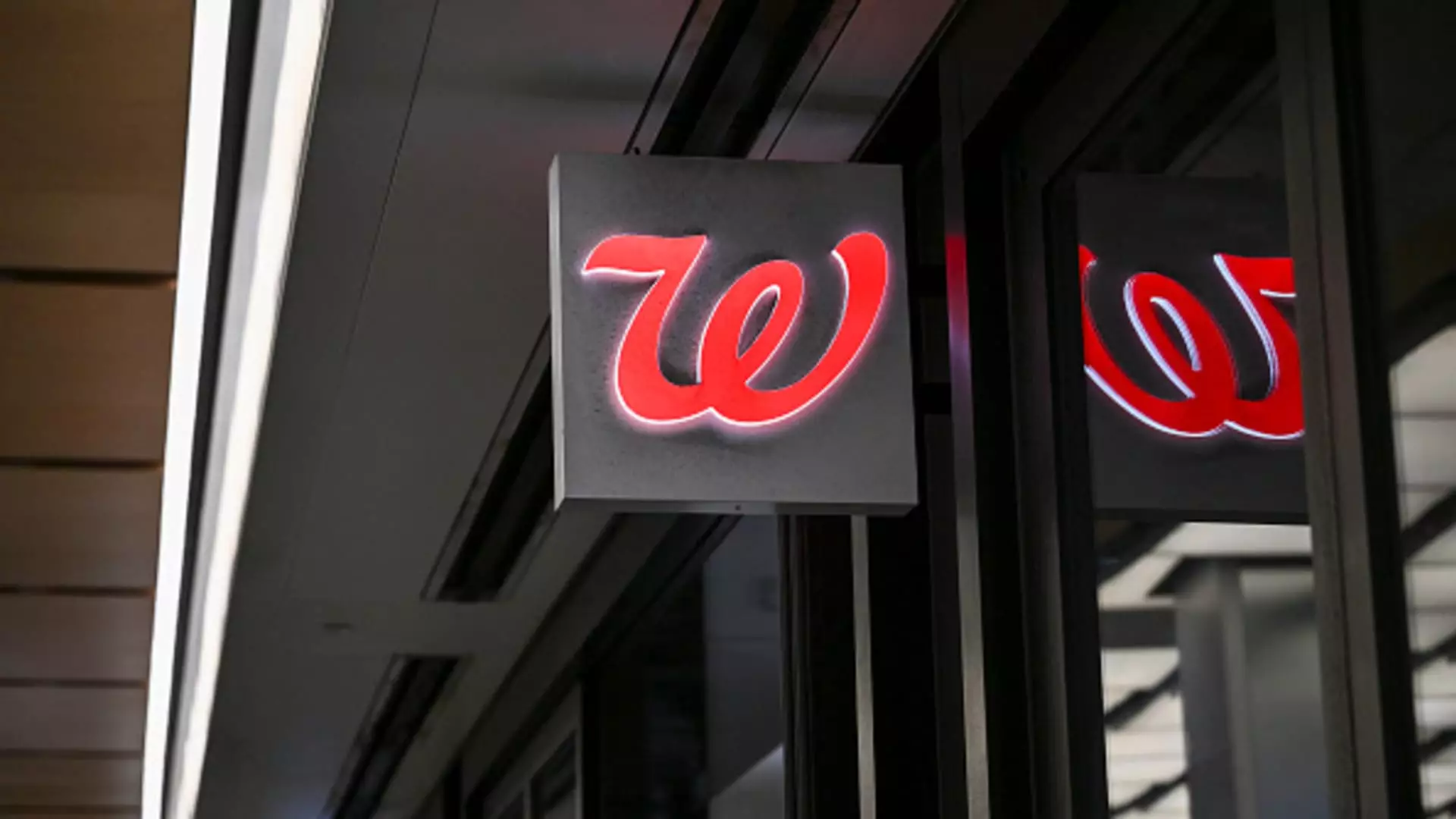In the ever-evolving landscape of retail pharmacy, Walgreens finds itself at a critical juncture. The recently reported fiscal second-quarter results show a company on the surface that appears to be performing better than anticipated, boasting earnings and revenues that exceeded analyst expectations. Yet, buried beneath these figures is a series of formidable challenges from which Walgreens may not easily emerge unscathed. As a liberal society, we must scrutinize not just the numbers but the deeper issues that underscore the health of this American staple.
While announcing earnings of 63 cents per share against a predicted 53 cents, and revenues of $38.59 billion amidst a backdrop of deteriorating customer spending, it is clear that Walgreens is attempting to put a bright face on a daunting situation. There is much to celebrate in terms of disciplined cost management and strategic growth within the U.S. Healthcare sector, but one must question whether these are mere band-aids on deeper lacerations inflicted by competitive pressures and crumbling consumer confidence.
Challenging the Status Quo
The impending deal to take Walgreens private under the auspices of Sycamore Partners is a decisive move, illustrating the company’s desperate search for regeneration amidst mounting challenges. In January, the projection of adjusted profits ranging from $1.40 to $1.80 per share underscores an organization grasping at straws in a turbulent financial sea. The withdrawal of fiscal guidance for 2025 raises red flags rather than cultivating confidence. What does this say about Walgreens’ long-term viability as a corporation?
The decision to shutter stores and reign in costs is a significant acknowledgment of the storm brewing on the horizon. Walgreens is feeling the relentless squeeze from competition—especially with powerhouses like Amazon and CVS gnawing at its market share. This ongoing battle extends not only to retail drug sales but also to healthcare initiatives, such as their investment in primary care clinic chain VillageMD. The outcomes of these ventures have so far shown a troubling divergence; while potential gains exist, the losses related to valuations point to a company grappling with fundamental challenges.
Legal Woes and Financial Pitfalls
Additionally, Walgreens has managed to score some financial wins, counting a surprising gain thanks to prudent divestments in select pharmaceutical ventures. The company realized $1 billion by strategically liquidating shares of Cencora and enjoying fruitful partnerships with BrightSpring. However, these gains have been overshadowed by a staggering net loss of $2.85 billion, which starkly contrasts with the mere $5.91 billion loss from the same period a year earlier. One must ponder, is the glass half full or half empty?
The burden of legal fees stemming from opioid-related settlements, alongside disputes with digital health partners, reveals a darker layer of a once-revered company. These legal issues not only soak up precious resources but also tarnish the corporate image, raising questions about corporate citizenship and ethical responsibility. If Walgreens seeks to be an influential player in healthcare, it must not only navigate legal waters but wholly commit to transforming its business practices for the betterment of public health.
Strategies for Survival
Although the road ahead appears littered with obstacles, there lies an opportunity for Walgreens to redefine its mission and value proposition. Strengthening ties with communities, prioritizing affordable care, and embracing innovation could serve as both a remedy and a growth strategy. The company must double down on its commitments to uplift nursing homes, provide at-home care, and fundamentally regain consumer trust.
As it stands, Walgreens is at a pivotal crossroads, balancing between the familiar shores of traditional retail pharmacy and the turbulent seas of the future healthcare landscape. This isn’t merely about cutting costs or restructuring; it’s also about cultivating a brand that resonates with a more health-conscious, socially aware consumer base. If Walgreens wishes to live up to its legacy, it must adapt, evolve, and commit to a mission that embraces the complexities of modern public health. Without such a pivot, the current trajectory suggests that Walgreens may not just be facing a tumultuous present but a perilous future.


Leave a Reply